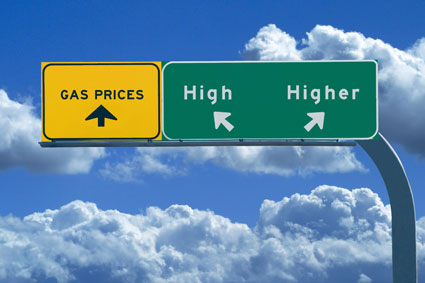ten simple tips for conserving gasoline
![]()
by Debra Lynn Dadd

THAT GASOLINE PRICES ARE HIGHER THAN EVER, here are ten simple tips for conserving gasoline and getting the most out of every gallon. You’ll save money, save energy, and reduce air pollution as well.
1. Plan errands
Run errands in logical sequence so you don’t have to backtrack and drive extra miles. You’ll save time, too.
2. Drive conservatively
Lower speeds, slower starts, and gradual accelerations improve fuel economy.
3. Anticipate traffic stops and slowdowns
Look ahead for red lights. If you are approaching a red light that has been on for a while, see if you can coast toward it at less than full speed so that by the time you reach it it has a chance to turn green and you can go through the light without having to stop completely. This saves gas.
4. Minimize use of air conditioning
Using air conditioning can significantly increase your gasoline consumption. Before turning on the air conditioning, open windows to flush out hot air from the car. Park in the shade or use an inexpensive window sun shade to keep your car cool. Carry frozen water in bottles to keep your body cool and hydrated. You can reduce or even eliminate the need for air conditioning by choosing a car with light exterior and interior colors and side vent windows, or add window glazings that slow solar adsorption or a sunroofs to your existing or new car.
5. Remove non-essential weight from your car
Don’t carry items that you don’t need all the time, such as a toolbox, or a full or partial gas can. Carry what you need, but remember that more weight uses more fuel to move the car.
6. Don’t leave the car idling for extended periods of time.
If a drive-through line looks longer than a minute or two, park instead and go inside the building (you’ll probably get faster service, too).
7. Maintain your tires
Keep them inflated to the proper pressure, and make sure they are wearing evenly. Align, balance and rotate as needed. Even one underinflated tire can cause more gasoline usage. Get an inexpensive tire pressure gauge (available at any auto supply store) and check your tires at least every month. Check tires when they are cold (before you have driven on them) to measure pressure properly.
8. Change the oil and oil filter every 3,000 miles
The oil filter removes dirt and particles from the engine so the parts move more freely. Old oil gets less slippery and doesn’t lubricate as well. Well-lubricated engine parts require less fuel to run and create less pollution.
9. Change the air filter at the recommended intervals
This could be from 6,000 to 30,000 miles depending on conditions. A new air filter allows more clean air to get in the engine, allowing it to burn more efficiently.
10. Maintain your automobile
Increase fuel efficiency with regular tune-ups at intervals recommended by the auto manufacturer.
Copyright ©2005 Debra Lynn Dadd – all rights reserved.
photo credits: High Gas Prices © Vividpixels | Dreamstime.com
 Hailed as “The Queen of Green” by the New York Times, Debra Lynn Dadd has been a leading consumer advocate for products and lifestyle choices that are better for health and the environment since 1982. Visit her website to learn more about her new book Home Safe Home, to sign up for her free email newsletters, and to browse 100s of links to 1000s of nontoxic, natural and earthwise products.
Hailed as “The Queen of Green” by the New York Times, Debra Lynn Dadd has been a leading consumer advocate for products and lifestyle choices that are better for health and the environment since 1982. Visit her website to learn more about her new book Home Safe Home, to sign up for her free email newsletters, and to browse 100s of links to 1000s of nontoxic, natural and earthwise products.








0 Comments